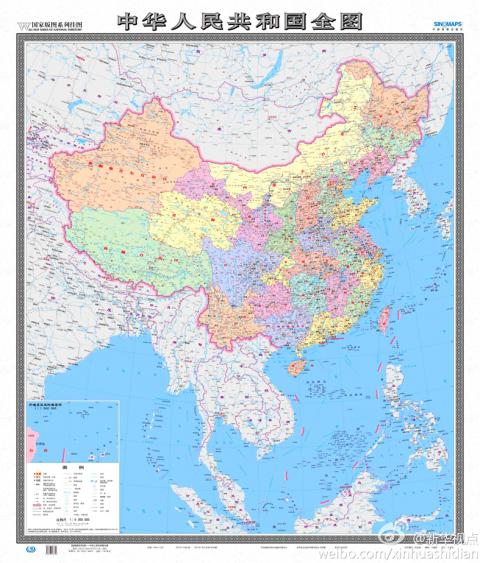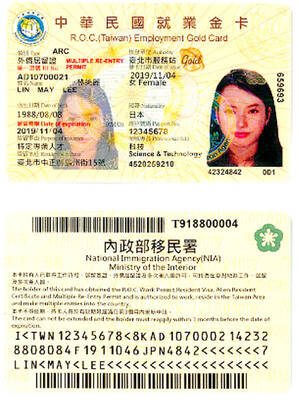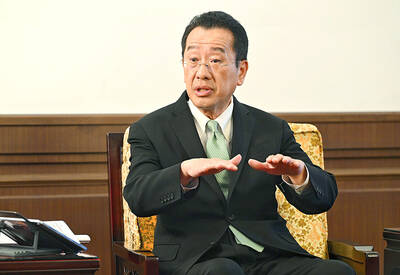A new map to be released later this month by China’s National Administration of Surveying, Mapping and Geoinformation increases from 29 to 130 the number of disputed areas marked as officially part of the People’s Republic of China (PRC), including the Diaoyutai Islands (釣魚台) claimed by Taiwan and Japan.
Previous editions of the “Wall Map Series of National Territory,” which presented China’s claimed territory in horizontal format, only included the larger contested islands in the South China Sea in a separate box at the bottom right of the map, Xinhua news agency said at the weekend. The territories included in the box were half scale and not clearly detailed.
The new map is vertical and is to be distributed by Sinomaps Press on behalf of the Chinese authorities starting next month. It will for the first time display the entirety of the PRC’s claimed territory on the same scale as continental China.

Photo from stcn.com
“The new map will be very significant in enhancing Chinese people’s awareness of national territory, safeguarding China’s marine rights and interests and manifesting China’s political diplomatic stance,” Xu Gencai (徐根才), editor-in-chief at Sinomaps Press, told Xinhua.
In all, the map includes 130 disputed areas, including Taiwan, islets and coral reefs in the Spratlys (Nansha Islands, 南沙群島), the Paracels (Xisha Islands, 西沙群島), the Pratas (Dongshan Islands, 東沙群島), the Macclesfield Bank (Zhongsha Islands, 中沙群島) and the Scarborough Shoal (Huangyan Island (黃岩島), which are the object of disputes between Taiwan, China, the Philippines, Vietnam, Brunei and Malaysia. It also includes the Diaoyutais, in the East China Sea.
In another first, an inset shows the northern tip of Taiwan and detailed mapping of the eight major islets comprising the Diaoyutais, known as the Senkakus by Japan.
Tensions in the area escalated last week, with China and Japan dispatching fighter aircraft after Chinese aircraft penetrated Japan’s Air Defense Identification Zone near the islets on three occasions.
Lu Chang-shui (盧長水), head of the Mainland Affairs Council’s Department of Information and Liaison, said the map was different from the one in new Chinese passports showing Taiwan and the South China Sea as Chinese territory, as well as pictures of Taiwanese tourist spots.
“A passport represents national sovereignty and a map is for a country’s internal use,” Lu said. “Consequently, the council will use different approaches to deal with the map and the passport.”
Lu added that official maps published by the government include the PRC as part of Republic of China (ROC) territory, as dictated by the ROC Constitution.
In related developments, state broadcaster NHK reported yesterday that Japan would deploy two additional patrol ships at its regional coast guard headquarters responsible for territory that includes the Senkakus.
The 335-tonne Kurose and the 3,100-tonne Chikuzen, which comes equipped with a helicopter, will be deployed in August and October respectively, it said.
Meanwhile, during a meeting in Sydney on Sunday, Japanese Minister of Foreign Affairs Fumio Kishida and Australian Minister of Foreign Affairs Bob Carr told a press conference that the two countries had agreed to increase bilateral cooperation on security issues, Kyodo news agency reported yesterday.
Additionally, the Asahi Shimbun reported that Japanese Prime Minister Shinzo Abe would embark on a trip to Southeast Asia tomorrow — his first since assuming office last month — where he will seek to deepen cooperation with ASEAN countries on trade, energy and security matters.
Additional reporting by Shih Hsiu-chuan and AFP

GAINING STEAM: The scheme initially failed to gather much attention, with only 188 cards issued in its first year, but gained popularity amid the COVID-19 pandemic Applications for the Employment Gold Card have increased in the past few years, with the card having been issued to a total of 13,191 people from 101 countries since its introduction in 2018, the National Development Council (NDC) said yesterday. Those who have received the card have included celebrities, such as former NBA star Dwight Howard and Australian-South Korean cheerleader Dahye Lee, the NDC said. The four-in-one Employment Gold Card combines a work permit, resident visa, Alien Resident Certificate (ARC) and re-entry permit. It was first introduced in February 2018 through the Act Governing Recruitment and Employment of Foreign Professionals (外國專業人才延攬及雇用法),

RESILIENCE: Deepening bilateral cooperation would extend the peace sustained over the 45 years since the Taiwan Relations Act, Greene said Taiwan-US relations are built on deep economic ties and shared values, American Institute in Taiwan (AIT) Director Raymond Greene said yesterday, adding that strengthening supply chain security in critical industries, enhancing societal resilience through cooperation and deepening partnerships are key to ensuring peace and stability for Taiwan in the years ahead. Greene made the remarks at the National Security Youth Forum, organized by National Taiwan University’s National Security and Strategy Studies Institution in Taipei. In his address in Mandarin Chinese, Greene said the Taiwan-US relationship is built on deep economic ties and shared interests, and grows stronger through the enduring friendship between

CAUTION URGED: Xiaohongshu and Douyin — the Chinese version of TikTok — are tools the Chinese government uses for its ‘united front’ propaganda, the MAC said Mainland Affairs Council (MAC) Minister Chiu Chui-cheng (邱垂正) yesterday urged people who use Chinese social media platforms to be cautious of being influenced by Beijing’s “united front” propaganda and undermining Taiwan’s sovereignty. Chiu made the remarks in response to queries about Chinese academic Zhang Weiwei (張維為) saying that as young Taiwanese are fond of interacting on Chinese app Xiaohongshu (小紅書, known as RedNote in English), “after unification with China, it would be easier to govern Taiwan than Hong Kong.” Zhang is professor of international relations at Shanghai’s Fudan University and director of its China Institute. When giving a speech at China’s Wuhan

ENHANCE DETERRENCE: Taiwan has to display ‘fierce resolve’ to defend itself for China to understand that the costs of war outweigh potential gains, Koo said Taiwan’s armed forces must reach a high level of combat readiness by 2027 to effectively deter a potential Chinese invasion, Minister of National Defense Wellington Koo (顧立雄) said in an interview with the Chinese-language Liberty Times (sister newspaper of the Taipei Times) published yesterday. His comments came three days after US Secretary of State Marco Rubio told the US Senate that deterring a Chinese attack on Taiwan requires making a conflict “cost more than what it’s worth.” Rubio made the remarks in response to a question about US policy on Taiwan’s defense from Republican Senator John Cornyn, who said that Chinese